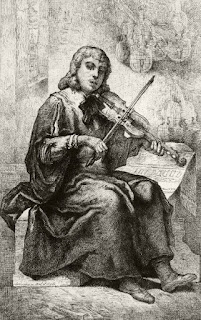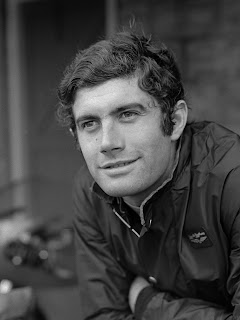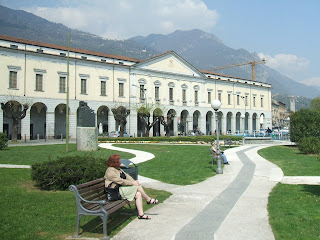Grandson of Andrea Amati produced some of world's finest instruments
 |
| A portrait of Nicolò Amati by French artist Jacques-Joseph Lecurieux |
The grandson of Andrea Amati, who is credited by most experts with being the inventor of the violin in its four-stringed form, Nicolò followed his father, Girolamo, and uncle, Antonio, into the family business.
Girolamo and Antonio went their separate ways in around 1590, Antonio setting up a different workshop, which was thought to specialize in lutes.
Initially, Nicolò made instruments that were very similar to those created by Girolamo but later began to add refinements of his own, the most significant of which came between 1630 and 1640 when he created the Grand Amati design.
This model, slightly wider and longer than the violins his father had produced, yielded greater power of tone than the smaller instruments and soon became sought after.
The bubonic plague outbreak that swept through Italy between 1629 and 1633 claimed the lives of both Girolamo and Nicolò's mother, Laura, and that of his main rival in violin manufacture at the time, Giovanni Paolo Maggini, from the Brescian school.
With Antonio also dead, although a few years earlier, and none of Girolamo's other sons having entered the business, Nicolò was left as one of the only active luthiers in the Cremonese tradition.
 |
| A 1662 violin made by Nicolò Amati in the Grand Amati design |
As a result, he took the decision for the first time to take on assistants from outside the family and appointed a number of apprentices, including Andrea Guarneri, Giacomo Gennaro and the German Matthias Klotz, who all went on to become great violin makers in their own right.
While there is no clear documentation of his having worked in Nicolò's shop, the brilliant Antonio Stradivari was clearly a student of his style and methods, as were Francesco Ruggiero, Giovanni Battista Ruggiero and the Austrian Jacob Stainer.
Nicolò's son, Girolamo, often known by his Latinized name Hieronymous II, continued in the family line, although without the same level of success as his forebears.
 |
| Thomas Bowes still plays a 1659 Nicolò Amati violin |
In 2013, the London auctioneers Ingles and Hayday sold a 1658 violin by Nicolò Amati for £432,000 ($654,590; €508,775).
The distinguished English violinist and orchestra leader Thomas Bowes is a prominent performer who uses a Nicolò Amati violin, the one he plays being manufactured in 1659.
Travel tip:
As well as being known universally as the city of the violin, with a number of manufacturers based there today, Cremona is also associated the with composer Claudio Monteverdi. The Baroque musician, whose 1607 work L'Orfeo is recognised as the first full-length opera, was born in Cremona and studied music at the city's 12th century Romanesque Duomo.
 |
| Piazza della Loggia in the historic centre of Brescia |
Brescia, a city in Lombardy situated between Lake Garda and the smaller Lago d'Iseo, is often overlooked by visitors to the area and first impressions are often coloured by the somewhat seedy nature of the streets in the immediate vicinity of the railway station. However, the historic centre contains some of the best preserved Roman buildings in northern Italy as well as a medieval castle, two cathedrals and the beautiful Renaissance square, Piazza della Loggia.
More reading:
Why Antonio Stradivari's violins are worth millions
Conductor Muti showing no signs of slowing down at 75 years old
Arcangelo Corelli and the development of violin style
1911: Birth of 'Godfather' composer Nino Rota
(Picture credits:Piazza della Loggia by Manfred Heyde via Wikimedia Commons)
Conductor Muti showing no signs of slowing down at 75 years old
Arcangelo Corelli and the development of violin style
Also on this day:
1911: Birth of 'Godfather' composer Nino Rota
(Picture credits:Piazza della Loggia by Manfred Heyde via Wikimedia Commons)
Home


